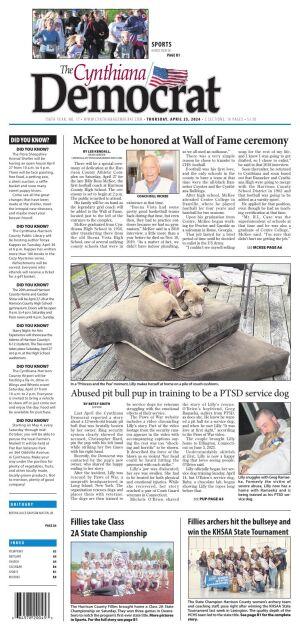Sometimes small things lead to big results
In the late spring of 1868, an incident took place that was profound in terms of its impact upon the history of American agriculture. The strange event took place on a small tobacco farm, and to this day the exact cause has not been explained. George Webb of Brown County Ohio was in the process of setting out his tobacco beds when he ran out of the tiny seeds. His farm was across the Ohio River from Augusta, Kentucky, and it was there that more seeds could be purchased. He sent two of his helpers to ferry across the river, buy some seeds, and return to the farm to finish with the beds. No problems developed: The plants grew, were set out, and at the end of the summer, the finished product was cut and housed in good order. But there was a noticeable difference in the plants that grew from the Kentucky seeds and all the other seeds previously used. That difference was easy to see from the time the tiny plants first sprouted until the crop was cut and housed. The plants were very light in color, lighter in weight, and lighter in texture. The leaves were larger than what were normally seen, and like the leaves, the stems and stalks were also light in color and weight. It was the first time the tobacco world had seen the light plants. What followed was a strain of tobacco that was later to be call “white tobacco.”
George Webb’s handling of the plants was important as well. Either by plan, design, or just accident, the lighter plants had been set out in a field removed from the fields planted with traditional seedlings. What Walsh did know was that he had something new. What he didn’t know was whether it was good and had potential, or if it was bad and a waste of time to pursue. What George Webb did know was that he was going to keep some of the seeds produced by the light tobacco. He planned to set out a field of the new strain in Kentucky far removed from other tobacco, so that it couldn’t be cross pollinated. And, that is what he did.
The first cigarette did not have any of this white tobacco in them, and they had a harsh and bitter taste. When, for whatever reason, some was purchased on the markets by the cigarette makers, and added into the blend, it was discovered that cigarettes made with the new white tobacco had not only a better taste but were much milder as well. Soon, that was all the smokers wanted. It became apparent early on that the white tobacco (burley) was absolutely necessary for cigarette production. If the producers wanted to sell cigarettes, they had to have the new white tobacco, and because of climate, it could only be raised in parts of Kentucky.
What we now know, the small isolated incident of George Webb’s discovery, led to a way of life that would otherwise be unknown. The entire social and business fabric of the twenty-one Kentucky counties in the burley district became shaped by the strange new leaf.


















(0) comments
Welcome to the discussion.
Log In
Keep it Clean. Please avoid obscene, vulgar, lewd, racist or sexually-oriented language.
PLEASE TURN OFF YOUR CAPS LOCK.
Don't Threaten. Threats of harming another person will not be tolerated.
Be Truthful. Don't knowingly lie about anyone or anything.
Be Nice. No racism, sexism or any sort of -ism that is degrading to another person.
Be Proactive. Use the 'Report' link on each comment to let us know of abusive posts.
Share with Us. We'd love to hear eyewitness accounts, the history behind an article.